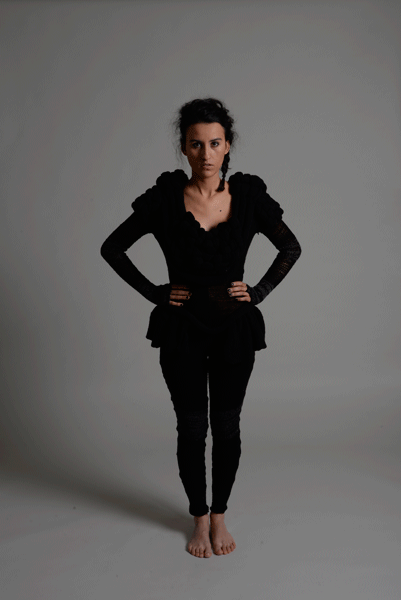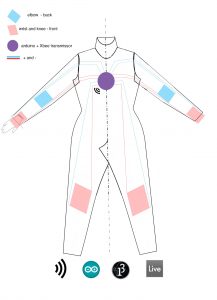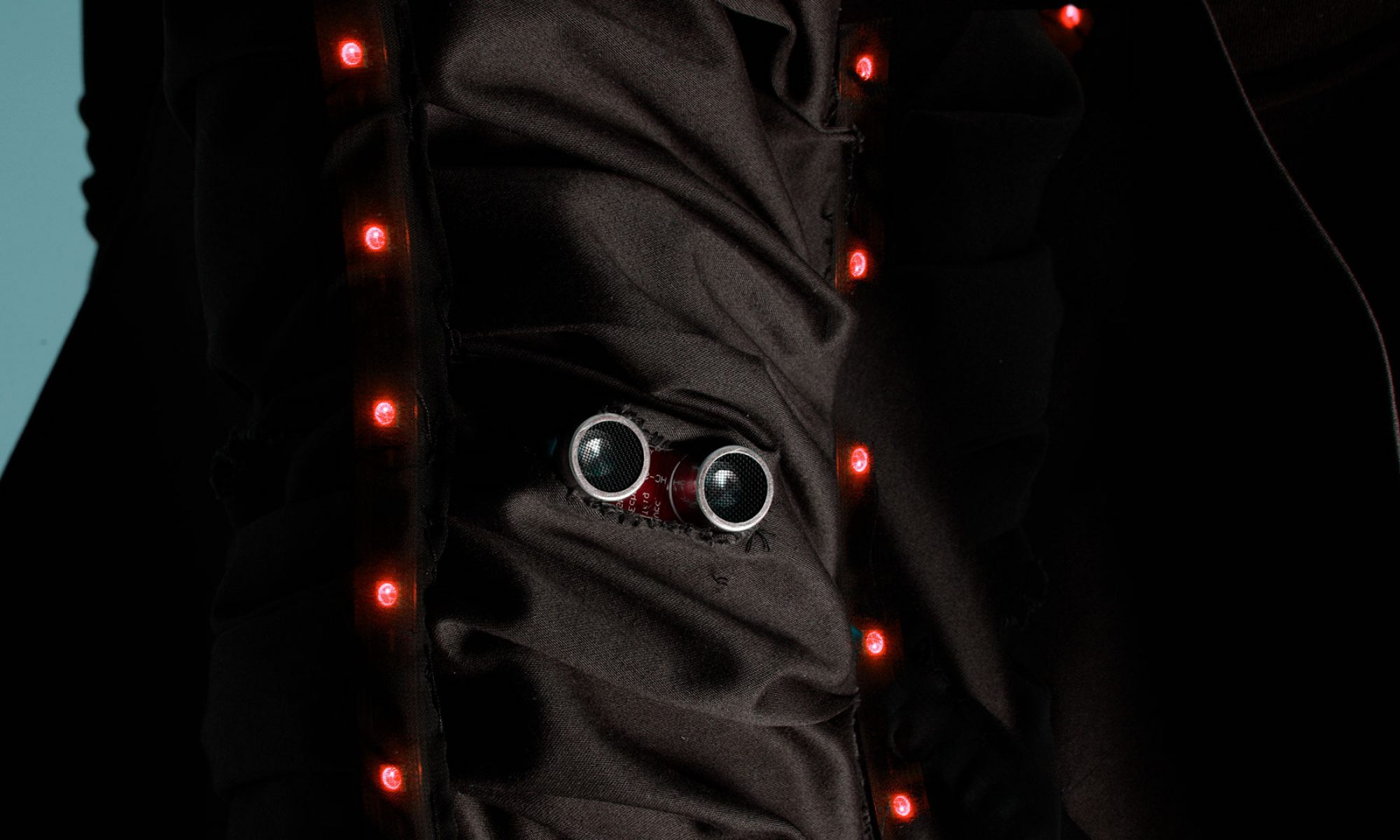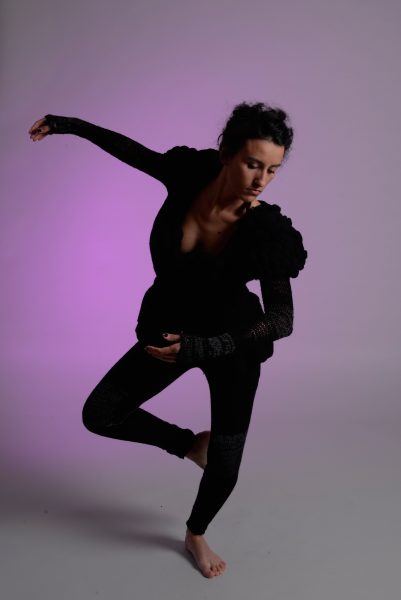This final post will sum up the concept, research process, technical implementation and evaluation of the interactive costume created for dancers.
The Idea
How can a costume turn the body’s movement into sound? During the process of research and development of our costume this specific question intrigued us. The idea was to develop a costume made out of handmade sensors to capture data of the body articulations. With further experimentations, we have tested our selfmade sensors such as the pressure and stretch ones. Those testes leaded us to understand better the potentials and limitations of e-textiles and to the decision of making integrated sensors within the fabric structure. As output, we choose to work with sounds. Interactive costumes for stage performances, so far, usually visualize actions with visual methods, such as LED lights, video mapping or movable parts. This project eagers a different approach, namely visualizing with sound. With more research, during this project, the chosen term to name the method of visualizing body movement in dancing by we found sonification of dance. Sonification usually is used to visualize sensor data (for example the click of a geiger counter) with non speech audio.
Design and Technical implementations
During the elaboration of this work we found in Afroditi Psarra’s Soft Articulations the results close to our goals. It shows the relation between motion and sound controlled by sensors. However, the option to work with integrated stretch sensor came from the video experimentation of Hannah Perner-Wilson(@Pulsea), which shows the behaviour of the knitted stretch sensors composed by different materials. Moreover, on her Kobakant website, it was possible to find complementary information about knitted sensors.
The decision to use the knitting technique was based on the scores table of the tested sensors . As woven fabric presents no stretchability at all, we chose knitting over crochet, which was the most stretchy, playing with conductive and resistive yarn and with normal thread. We were able to develop a prototype with integrated circuit into the fabric weft. However, despite being satisfied with the technique itself, the aesthetic was limited by the typical knitted style. On Sandra’s Backlund garments, one can see haute couture through volumes, textures and elaborated details made out of the knitting technique. Her style inspired us to break out of this typical knitting. The final costume features 6 strategically placed sensors (hands, elbows, knees) that are connected with conductive yarn to a backpack; this contains the Arduino micro-controller LilyPad with 6 voltage separating circuits, batteries and a low-power digital radio for communication with the external computer. Furthermore an application written in the Java language Processing processes the signals in real time and creates sound output through a commercial music sequencer.


For this work an interdisciplinary group of students focused both on the theoretical and practical. The theoretical approximation was related to the uses of sounds as an output for dances expression while the practical studies were dedicated to the aim of finding alternative ways to handcraft sensors out of conductive/resistive yarns, fabrics and etc. Therefore, following tutorials of the interactive wearable community were of the utmost importance to the development and first contact with handmade sensors. The practical approach leaned on the development of handmade sensors, testing and grading them according to the appropriate characteristics. The written code and the circuit had been improved during the process supporting the different conditions that each sensor presented. Once a prototype had been built, we went through an iterative process along with the dancers. Their feedback at each iteration was key to approaching a real-life product.

